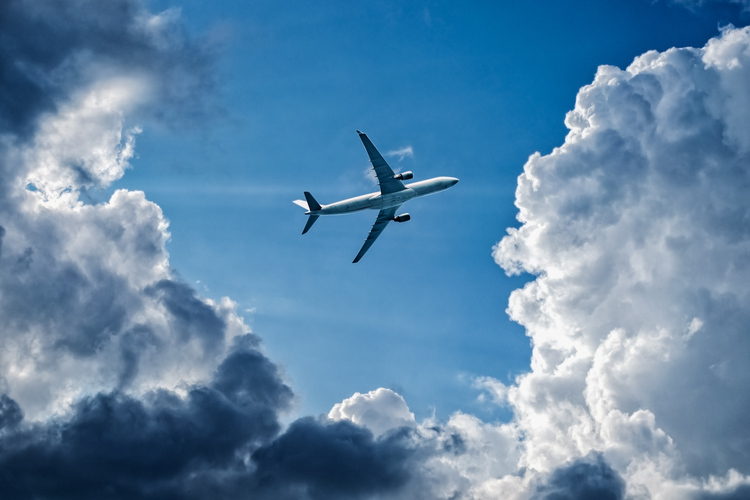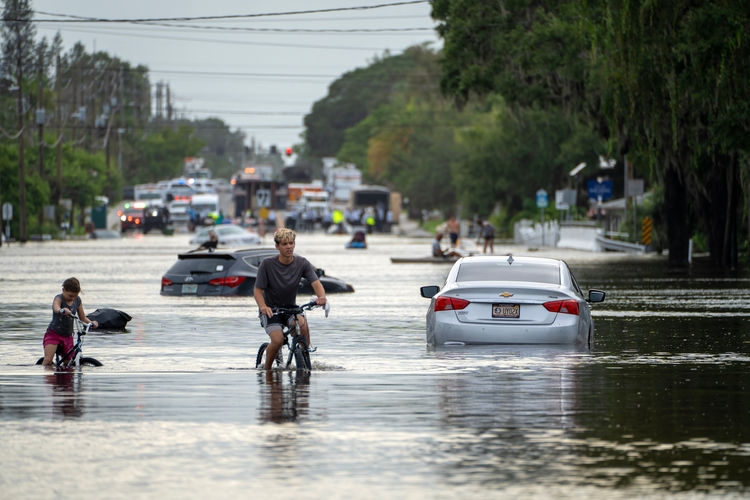
From worsening turbulence to reducing weight on flights, discover how climate change may impact your future travels
By
Each day, more than 100,000 flights take off and land around the world. One of the most common ways of travelling from nation to nation, flying has surged in popularity. Global passenger numbers now surpass pre-pandemic levels.
As flying becomes a more common mode of transport, the planet is experiencing another increasingly prevalent matter: climate change. Across time, warmer temperatures are leading to a range of adverse weather phenomena: increased droughts and floods, more severe storms and changing rainfall patterns. In short, these meteorological events are impacting the way we fly.
Enjoying this article? Check out our related reads:
But how exactly is climate change impacting the aviation industry? And how exactly can we mitigate against these changes, to ensure flying remains a smooth and enjoyable experience for travellers?
1) Hotter air means heavier planes

As temperatures rise around the world, air density declines. If air is less dense, for the same speed that a plane takes off, there is less lift – meaning the aircraft may potentially not become airborne.
To compensate, the aircraft must either fly faster or reduce its weight before take off. According to one study, under future warming predictions, 10-30 per cent of departures might need weight restrictions. This means on very hot days, airlines may offload passengers, cargo or reduce fuel reserves – reducing revenue per flight.
Another means of mitigating the impact of low air density is to increase runway length. One example of a Boeing 737-800 in a study would require anywhere between 3.5 metres to 168.8 metres of extra runway to take off, depending on the location. Even in modest warming scenarios, takeoff distances at many airports would require around an extra 100 metres of runway.
While major airports may be able to accommodate such requests for longer runways, airports with shorter or constrained runways may become more vulnerable.
To entirely avoid warmer temperatures – and the dreaded lower air density – airlines may entirely shift departure windows so that aircraft only take off during the cooler hours of early mornings and late evenings.
2) Worsening turbulence

Most aircraft travel at altitudes between 30,000 and 40,000 feet, flying through high-altitude jet streams. These are narrow corridors of fast-moving air, and form where warm tropical air meets cool polar air.
However, as the planet warms, these temperature gradients are shifting. The lower layer of the atmosphere – the troposphere – is warming rapidly, while the stratosphere above it is cooling. This pattern causes what is known as vertical wind shear, a key driver of clear-air turbulence, the kind of turbulence that hits with little warning.
Studies prove that clear-air turbulence is on the rise in recent years. Between 1979 and 2020, the amount of severe clear-air turbulence increased by 55 per cent, an uptick linked directly to changes in the upper atmosphere driven by climate change.
This paints a concerning picture for the future of aviation travel. One study estimated that by 2050 to 2080, under a moderate climate scenario, severe turbulence in the North Atlantic flight corridor could double or even triple.
To avoid turbulence zones, aircraft may need to reroute or change altitude, increasing fuel consumption and emissions. In addition, repeated turbulence encounters can worsen the structural integrity of planes, meaning airlines may face rising maintenance schedules and costs.
3) Extreme weather

Flying safely often depends on stable, predictable weather. Yet the planet’s warming atmosphere is making stronger storms, heavier rainfall and more lightning all the more common, impacting flights.
Between 2014 and 2023, weather related delays in the European airspace network increased by nearly 30 per cent, largely due to storms, high winds and thunderstorms that forced planes to either divert or become grounded. According to EuroControl, a pan-European organisation dedicated to supporting European aviation, such an increase can be attributed to ‘more frequent and more intense meteorological phenomena consistent with observed climate change trends’.
In particular, heavy rainfall can also lead to a range of problems for planes, from runway and taxiway flooding to reduced braking performance. Already, major airpots such as Miami International and Shanghai Pudong are strengthening their flood defences to help mitigate against unprecedented levels of precipitation.
Finally, lightning strikes also pose a threat to aircraft. Warmer, moister air can increase lightning frequency. In fact, a 2014 study projected that for every 1°C rise in global temperature, lightning frequency could rise by around 12 per cent.
4) Flooding and sea level rise

Many of the world’s major airports – such as New York’s JFK and London Heathrow – are built on low-lying land. According to the International Civil Aviation Organisation, more than 100 airports globally are at risk from coastal flooding or storm surges by the end of the century.
Another study, published in 2021, found that if global warming exceeds 2°C, up to 385 airports – nearly 10 per cent of global aviation infrastructure – could be at risk of coastal flooding, including many international hubs.
Flooding of airports can be an economically catastrophic event. Back in 2011, Suvarnabhumi Airport was forced to close during Thailand’s floods, costing the economy $1.7 billion in lost air traffic and tourism.



